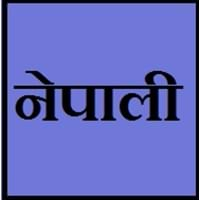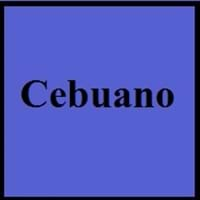Nepali and Cebuano
Countries
India, Nepal
Philippines
National Language
Nepal
Philippines
Second Language
Republic of Brazil
Philippines
Speaking Continents
Asia
Asia
Minority Language
People's Republic of China
Not spoken in any of the countries
Regulated By
Language Academy of Nepal
Visayan Academy of Arts and Letters
Interesting Facts
- Before the term "Nepali" was coined, historically the language was first called the Khas language, Gorkhali or Gukhali.
- Nepali has borrowed many loanwords from neighboring Tibeto-Burmese languages.
- About one-fifth of the population of the philippines speak cebuano and are second largest ethnolinguistic group in the country.
- Cebuano contains many words of Spanish origin.
Similar To
Hindi
Hiligaynon Language
Derived From
Sanskrit Language
Island of Cebu
Alphabets in
Nepali-Alphabets.jpg#200
Cebuano-Alphabets.jpg#200
Writing Direction
Left-To-Right, Horizontal
Not Available
Hello
नमस्ते (namaste)
Hoy
Thank You
धन्यवाद (dhanyabad)
Salamat
How Are You?
तिमीलाई कस्तो छ? (timi lai kasto cha?)
Kumusta man ka?
Good Night
शुभ रात्री (subha ratri)
Maayong Gabii
Good Evening
शुभ सन्ध्या (subha sandhya)
Maayong Gabii
Good Afternoon
Good afternoon
Maayong Hapon
Good Morning
शुभ प्रभात (subha prabhat)
Maayong Buntag
Sorry
माफ गनुस् (maapha ganus)
Ikasubo ko
Bye
नमस्ते (namaste)
Babay
I Love You
म तपाइलाइ माया गर्छु। (ma tapainlai maya garchu)
Gihigugma ko ikaw
Excuse Me
माफ गनुस् (maapha ganus)
Ekskyus mi
Dialect 1
Doteli
Boholano
Where They Speak
Nepal
Bohol
How Many People Speak
Not Available
Dialect 2
Bajhangi
Southern Kana
Where They Speak
India, Nepal
southern Leyte
Dialect 3
Baitadeli
North Kana
Where They Speak
Nepal
northern part of Leyte
How Many People Speak?
Not Available
Native Name
नेपाली (nēpālī)
Visayan
Alternative Names
Eastern Pahadi, Gorkhali, Gurkhali, Khaskura, Nepalese, Parbate
Binisaya, Bisayan, Sebuano, Sugbuanon, Sugbuhanon, Visayan
French Name
népalais
cebuano
German Name
Nepali
Cebuano
Pronunciation
Not Available
Not Available
Ethnicity
Gurkha, Khas people, Madhesi and Tharu
Cebuano people
Origin
19 BC
16th century
Language Family
Indo-European Family
Austronesian Family
Subgroup
Indo-Iranian
Not Available
Branch
Indic
Not Available
Early Forms
Khas language, Gurkhali, Parbatiya, Dzongkha Lhotshammikha
No early forms
Standard Forms
Nepali
Standard Cebuano
Signed Forms
Signed Nepali
Not Available
Scope
Individual, Macrolanguage
Individual
ISO 639 1
ne
No data Available
ISO 639 6
Not Available
Not Available
Glottocode
nepa1254
cebu1242
Linguasphere
12
No data Available
Language Type
Living
Living
Language Linguistic Typology
Subject-Object-Verb
Verb-Subject-Object
Language Morphological Typology
Agglutinative
Not Available
All Nepali and Cebuano Dialects
Most languages have dialects where each dialect differ from other dialect with respect to grammar and vocabulary. Here you will get to know all Nepali and Cebuano dialects. Various dialects of Nepali and Cebuano language differ in their pronunciations and words. Dialects of Nepali are spoken in different Nepali Speaking Countries whereas Cebuano Dialects are spoken in different Cebuano speaking countries. Also the number of people speaking Nepali vs Cebuano Dialects varies from few thousands to many millions. Some of the Nepali dialects include: Doteli, Bajhangi. Cebuano dialects include: Boholano , Southern Kana. Also learn about dialects in South American Languages and North American Languages.
Nepali and Cebuano Speaking population
Nepali and Cebuano speaking population is one of the factors based on which Nepali and Cebuano languages can be compared. The total count of Nepali and Cebuano Speaking population in percentage is also given. The percentage of people speaking Nepali language is 0.25 % whereas the percentage of people speaking Cebuano language is 0.32 %. When we compare the speaking population of any two languages we get to know which of two languages is more popular. Find more details about how many people speak Nepali and Cebuano on Nepali vs Cebuano where you will get native speakers, speaking population in percentage and native names.
Nepali and Cebuano Language Codes
Nepali and Cebuano language codes are used in those applications where using language names are tedious. Nepali and Cebuano Language Codes include all the international language codes, glottocodes and linguasphere.





